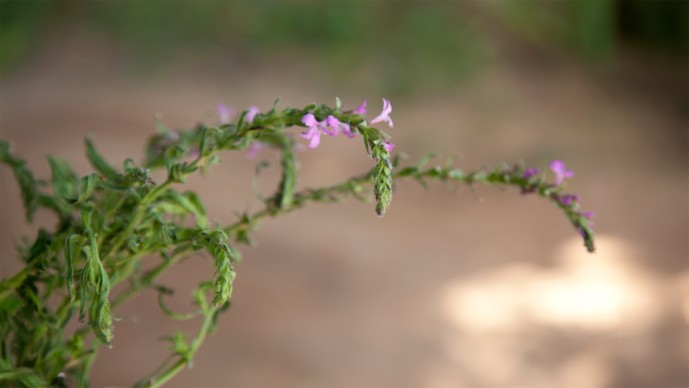
Chances are that, when you were a kid, you picked a dandelion or two and blew on it, watching its seeds helicopter gracefully through the air, headed for fields, lawns, and gardens. Your neighbors probably didn't appreciate the help you gave the pesky weed, but the dandelion is mostly harmless. Other weeds are more dangerous - much more dangerous. The striga weed, for example, damages or completely destroys the crops that millions of small farmers around the world depend on to feed their families and make a living. Dr. Travis Bayer, founder and Chief Technology Officer of Sound Agriculture, is helping those farmers rid their fields of striga - and double their crop yields in the process.
Since plants can't solve their problems by running away, they've learned to be master communicators instead. Any time they need support, they send out different types of chemical signals into the soil and even into the air. One way they get nutrients from the soil, for instance, is by sending out chemical compounds called strigolactones; microbes in the soil respond to these signals in ways that help plants grow.
Unfortunately, helpful collaborators in the soil aren't the only ones paying attention. Lying dormant in the soil of a lot of farms south of the Sahara is a parasitic plant called striga, also known as Witchweed ("striga" is Latin for "witch"). And once striga has sensed the presence of strigolactones nearby, it starts to drill into the roots of a plant and suck out the water and nutrients the soil community is giving the plant. After 6 or 8 weeks of doing this, the striga blooms into a beautiful purple flower - one that contains thousands of striga seeds. Which means that a few striga plants contain within themselves enough seeds to overrun an entire field with their offspring. And that's exactly what happens. A striga infestation reduces crop yields by anywhere from 30 to 100 percent - complete crop loss. And it stays around: a field overrun with striga one year will be overrun the next year, and the year after that. In fact, much of the time, the only solution small farmers have is to move.
Dr. Bayer was a biochemist at a British university, and he had no particular interest in agriculture. But when a postdoc in his lab who had grown up on a small farm in Zimbabwe started talking about Witchweed and its ruinous consequences, he started wondering whether it was possible to trick striga into thinking that crops had started growing when in fact they hadn't even been planted yet. With a Grand Challenges Explorations grant to protect crop plants from farm to market, he got to work in 2012 developing a strain of yeast that produced strigolactones. Once he had the compound, he conducted field trials in Kenya and Uganda, where, by spraying fields a week before crops were due to be planted, he could send a false signal to the dormant striga weeds that it was time to wake up and rob growing plants of their nutrients. So the striga woke up, went in search of the strigolactone-producing roots, didn't find any…and then, because striga can't survive without a host, it died. The field trials showed that this process, which goes by the slightly morbid name of "suicidal germination," killed between 95 and 97 percent of the striga weed, with the result that farmers' harvest yield doubled.
The success of the grant gave Dr. Bayer the confidence to leave academia entirely and work full-time at the company he founded, Sound Agriculture. Since regulatory systems in poor countries tend to lack the resources it would take to test everything submitted to them, they tend to depend on U.S. and international systems, so Dr. Bayer is working to get the compound approved in the U.S. first before bringing it to small farmers in sub-Saharan Africa. In the meantime, in working with U.S. farmers, he's discovered that the spray doesn't just eliminate striga; the strigolactones it produces, by attracting more nutrients from the soil, also increase hardiness and drought tolerance in crops even when there was no striga in a field to begin with.
Tricking a plant called Witchweed into killing itself might sound like a grisly endeavor. But in fact it could help millions of small farmers around the world bring fields they thought were dead back to new, thriving life.



